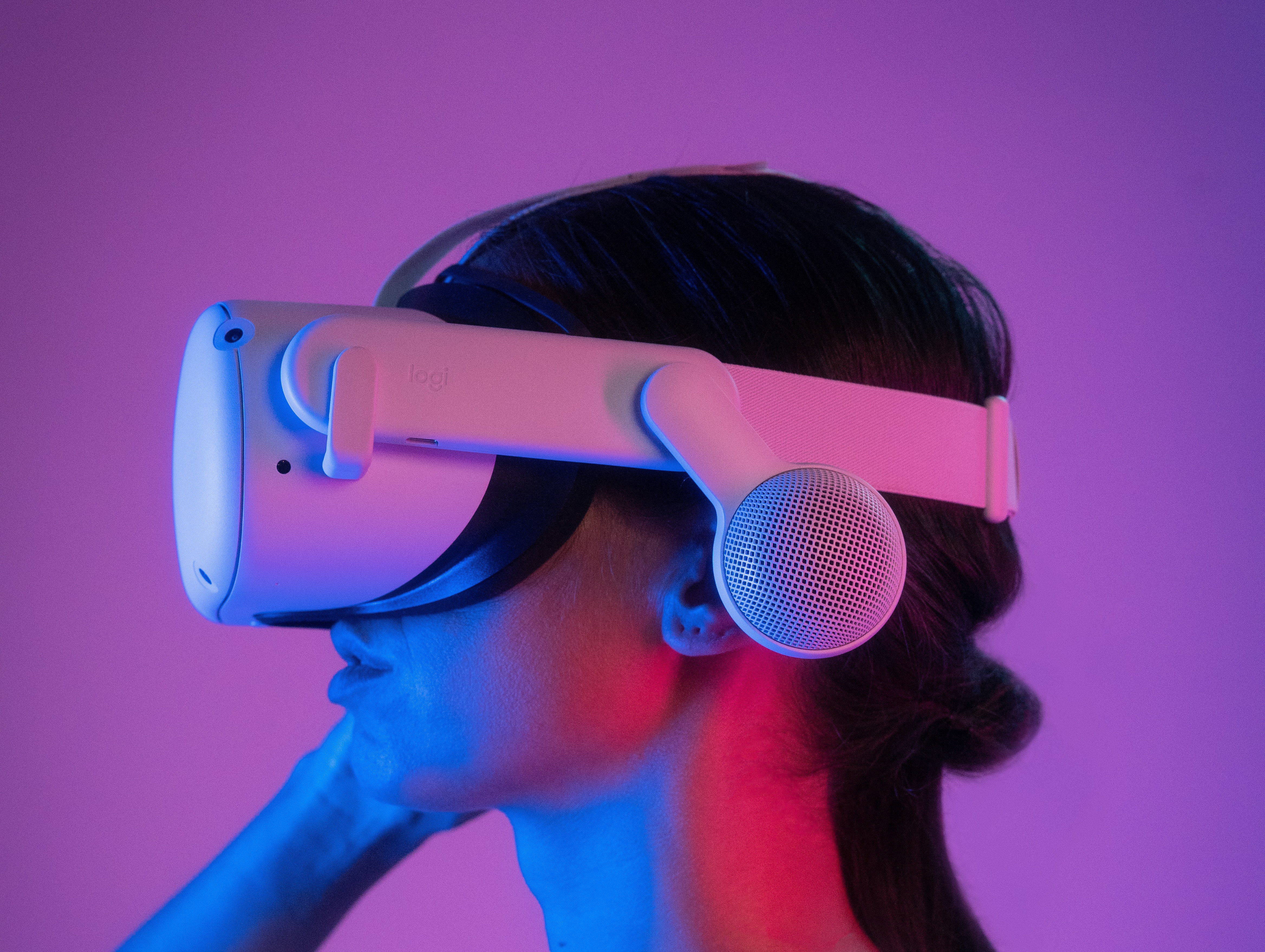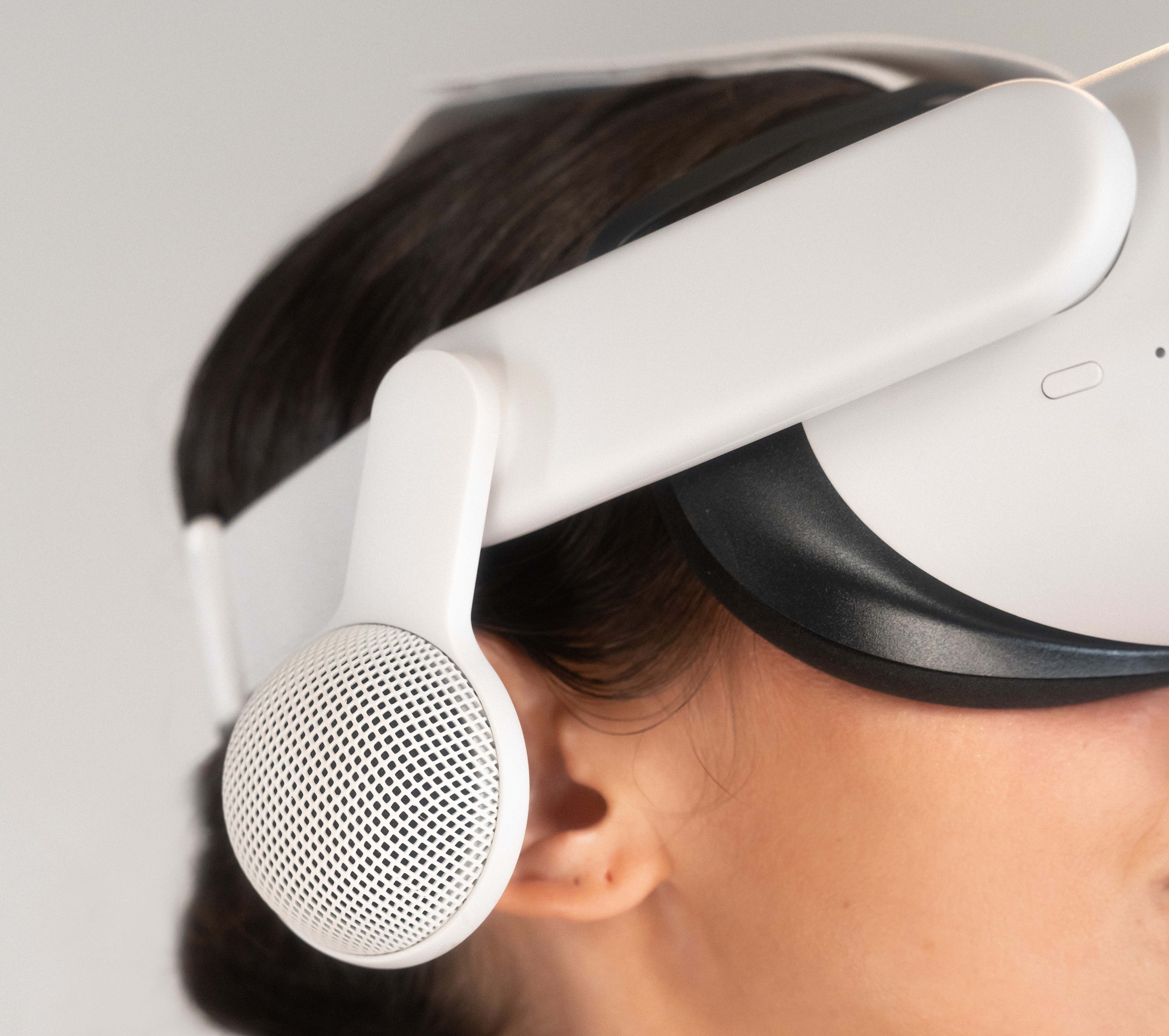Android Central Verdict
The Logitech Chorus headset isn't just another pair of earbuds, but it's also not just a pair of headphones. They are ergonomically designed to fit and function just like a standard part of the Oculus Quest 2 VR headset and deliver great sound quality, without even coming close to covering or resting on your ears.
Pros
- +
Speakers don't touch your ears
- +
Delivers crisp, quality sound
- +
Weight is minimal and balanced
- +
Louder maximum volume level
Cons
- -
Minimal sound bleed-through
- -
Requires resetting your preferred volume
Why you can trust Android Central
Using headphones on a virtual reality device can be tricky. Even the best pair of Bluetooth earbuds can't fully mimic the directional sound and depth of the Meta Quest 2's positional audio. A good pair of traditional headphones may be able to keep up with the sound, but keeping your ears encased in a near soundproof booth while you're dodging bullets in Superhot, or keeping the beat in Smash Drums, can produce an icky film of smelly ear sweat.
Logitech has come up with an audio accessory for the Oculus Quest 2 that solves both problems. The Logitech Chorus is a pair of ear speakers that attach to Meta's VR console headset to deliver directional sounds without having to suction itself to the side of your head like an alien cranium hugger. Does it deliver the kind of quality sound you expect from a virtual experience? Let's find out.
Logitech Chorus: Price and availability

This VR headset from Logitech retails for $99.99, and only works with the Meta Quest 2. It comes with an attached USB-C passthrough cable that plugs into the headset's power port on the left side of the device.
Logitech Chorus: What's good

For starters, Logitech's new Oculus accessory delivers on the promise that the speakers can deliver a quality stream of multi-directional sound, without coming into direct contact with your ears.
The Logitech Chorus consists of two paddles that fit snuggly on the plastic slats attached to the main headset, with a wire running between them. The wire tucks neatly under the eye shield or the Velcro scalp strip if you're using a more advanced head strap for your Meta Quest 2.
Sound is just as important to any virtual experiences as the visuals, whether you're blowing away zombies in Arizona Sunshine, or conducting an important meeting in Spatial. The slightest turn of the head can take you out of the experience if the audio doesn't follow you, and the Chorus' ear pieces do an excellent job of delivering the headset's virtual audio movements in terms of direction and depth.
The coolest part about Logitech's VR headphones is that they don't feel like earbuds or headphones in the slightest. In fact, it feels like an improvement on the Oculus' built-in directional speakers that can shoot the audio into your ears. They allow for a much louder volume, which is a must if you're playing songs with a deep baseline or heavy drums on a rhythm game like Skrillex's DLC pack for Beat Saber. The lack of contact makes VR experiences more immersive because they sound and feel more like they are coming from actual objects, scenes, or other people and players.

There are also little ergonomic touches built into the headset's design that makes it preferable to earbuds and headphones. There is no power switch or button, and that's a really smart choice for a headset with a sensitivity to touch. Anyone who's accidentally touched the side of their headset in the middle of a gripping game knows the jarring frustration of being taken out of the experience and into Passthrough mode.
Instead, these ear accessories turn on simply by lowering them into place over your ears after you've adjusted the headset to your maximum level of snugness. Even an all-in-one VR headset like the Oculus Quest 2 has a couple of extra steps that users have to take before they get to the home screen compared to a traditional gaming console or computer. So it's a nice touch to have the power activator built into the ergonomic functionality of the Chorus.
Get the latest news from Android Central, your trusted companion in the world of Android

Another concern about any set of headphones plugged into a VR device is the weight. If they are too big, they can making the tiniest movements more cumbersome that'll suck you out of your virtual world like some giant pixelated vacuum.
The Logitech Chorus headset is only a little over six ounces (6.38 ounces to be exact), and the weight is distributed very evenly on either speaker. They also attach very easily to the straps on the main headset over the basic strap that comes with the Meta Quest 2, or the Elite Oculus straps that lock your head into place like some kind of cranial rotary vice.
The headphones are powered and fed audio through the Oculus Quest 2's power port on the left side. The plug is angled and tucked nicely under the attaching strap so it's not sticking out and throwing off your balance, or leaving a wire dangling that you can accidentally pull out with your arm while you're swinging virtual swords. There's also a power port built into the strap, so you can charge your headset without having to take the headphones off and plug in a battery pack, so you can play just a little bit longer.
Logitech Chorus: What's not so good

The downsides for the Chorus are few, and not really that noticeable since the sound quality is very high, and the weight and amount of contact is so low.
When you lower the speakers parallel to your ears to power on the Logitech Chorus, the volume always starts at zero. It's only one extra step to power up to something higher, but it can get a little annoying if you're in a hurry to get things going.
The amount of sound that bleeds out of the speakers is noticeable if you like your virtual experiences at the same decibel level as a Spinal Tap concert. They don't completely encase all the noise that comes out of them. So people who aren't on the headset might hear the sound of your game or virtual experience if they aren't wearing headphones, strapped into their own VR device, or encased in a sound proof isolation bubble.
Logitech Chorus: Should you buy it?

You should buy this if...
- You want a louder level of volume coming out of your Meta Quest 2.
- You're sick of using Bluetooth earbuds with latent audio or heavy headphones with annoying cords.
- You want a true virtual experience that you can hear as well as you can see.
You shouldn't buy this if...
- You need a set of VR headphones that prevents people from hearing even a modicum of what you're hearing.
- Little things in life like adjusting the starting volume level will bother you.
The Logitech Chorus feels made for the Oculus Quest 2, because it's designed only to work with the Oculus Quest 2, so all of the little touches are there to adapt specifically to this device. It fits snuggly onto the headset without adding any noticeable amount of clunky weight. The ear pieces hover over your ears and deliver a louder and crisper sound quality than the headset's speakers, or even the best headphones.
They are also a bargain for just under $100 considering what Logitech delivers with the Chorus. These ear pieces feel like a natural evolutionary step for an already awesome VR device.

Danny Gallagher is a freelance tech, game and comedy writer based out of Dallas, Tex. He's written features for places like CNET, Cracked, Maxim, Mandatory and The Onion AV Club. He's also written material for games produced by Jackbox Games and SnapFingerClick.

